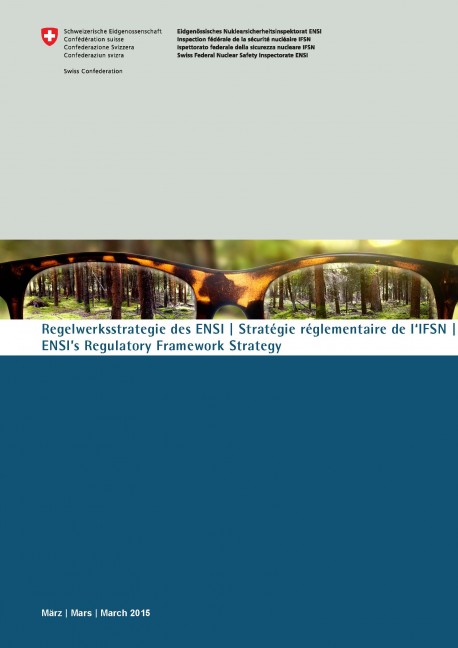ENSI Board approves strategy for ENSI’s regulatory framework
The regulatory framework of the Swiss Federal Nuclear Safety Inspectorate (ENSI) is harmonised with the relevant international requirements. ENSI only issues its own guidelines when it is necessary to do so, and it involves all the stakeholders when it drafts them. These principles are stated in a new strategy for the regulatory framework which the ENSI Board has approved.
 Anne Eckhardt, Chair of the ENSI Board, explains the background to the strategy for the regulatory framework as follows: “ENSI’s regulatory framework follows clear principles, which we have now set out in a strategy paper. In matters of nuclear safety, Switzerland has a lean regulatory framework which has an international basis and is specifically geared to the objective of protecting people and the environment.” The regulatory framework strategy includes five guiding principles:
Anne Eckhardt, Chair of the ENSI Board, explains the background to the strategy for the regulatory framework as follows: “ENSI’s regulatory framework follows clear principles, which we have now set out in a strategy paper. In matters of nuclear safety, Switzerland has a lean regulatory framework which has an international basis and is specifically geared to the objective of protecting people and the environment.” The regulatory framework strategy includes five guiding principles:
- ENSI’s regulatory framework is harmonised with the relevant international requirements and is comprehensive.
- ENSI’s regulatory framework is based on tried-and-tested rules that are already in existence, wherever they are suitable for application within the Inspectorate’s supervisory scope.
- ENSI only issues its own guidelines when it is necessary to do so.
- ENSI’s guidelines are drafted transparently, with the involvement of all stakeholders.
- The level of detail of ENSI’s regulatory framework is geared to the hazard potential and the risk.
The Swiss regulatory framework won recognition during the review by international experts from the International Atomic Energy Agency (IAEA) in connection with the IRRS mission in 2011. “The strategy for the regulatory framework which is now available plays its part in maintaining and continuing to develop the Swiss regulatory framework, in keeping with international standards and requirements,” Anne Eckhardt notes.
International standards are taken into account
The IAEA’s member states have undertaken to be guided by the defined standards, requirements and recommendations on nuclear safety and to create national regulatory frameworks which correspond to them. “In Switzerland, therefore, we also adopt international safety standards and incorporate them into our own regulatory framework,” Anne Eckhardt comments. She adds: “In doing so, we may also go beyond international requirements and take account of circumstances that are specific to this country.”
When drafting and updating its regulatory framework, ENSI takes the IAEA’s recommendations as the basis. ENSI also implements the requirements of the Western European Nuclear Regulators Association (WENRA) in its regulatory framework. “By taking account of relevant international requirements in our own regulatory framework, we are not only making our own contribution to nuclear safety, we are also playing a major part in the harmonisation of requirements worldwide,” ENSI’s Director General Hans Wanner points out.
ENSI’s own guidelines are drafted transparently
If it becomes apparent that ENSI’s own regulations are required for a particular purpose, the Inspectorate draws up suitable guidelines. These are only necessary if they are to be used repeatedly or applied in several nuclear installations. Individual cases do not have to be regulated by guidelines; instead, they can be handled by means of supervisory decisions. During the 2011 IRRS mission, the international experts gave a positive assessment of this transparent process. Guidelines will continue to be drafted transparently in the future. Before they are brought into force, they undergo a public consultation procedure.
“We involve the stakeholders and show how we have dealt with the requests for changes that they have submitted,” Hans Wanner adds. ENSI matches the level of regulation to the hazard potential and the risk. Nuclear power plants are therefore subject to the highest level of regulation. In cases where different regulations are appropriate for different nuclear installations and activities, they are adopted accordingly.

